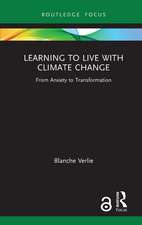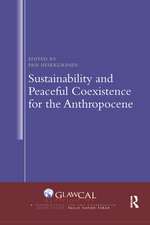Vegetation Ecology of Central Europe
Autor Heinz H. Ellenberg Traducere de Gordon K. Strutten Limba Engleză Paperback – 26 aug 2009
Preț: 501.18 lei
Preț vechi: 563.12 lei
-11% Nou
Puncte Express: 752
Preț estimativ în valută:
95.90€ • 102.55$ • 79.96£
95.90€ • 102.55$ • 79.96£
Carte tipărită la comandă
Livrare economică 17 aprilie-01 mai
Preluare comenzi: 021 569.72.76
Specificații
ISBN-13: 9780521115124
ISBN-10: 0521115124
Pagini: 756
Ilustrații: black & white illustrations
Dimensiuni: 152 x 229 x 38 mm
Greutate: 1.32 kg
Ediția:Revizuită
Editura: Cambridge University Press
Colecția Cambridge University Press
Locul publicării:Cambridge, United Kingdom
ISBN-10: 0521115124
Pagini: 756
Ilustrații: black & white illustrations
Dimensiuni: 152 x 229 x 38 mm
Greutate: 1.32 kg
Ediția:Revizuită
Editura: Cambridge University Press
Colecția Cambridge University Press
Locul publicării:Cambridge, United Kingdom
Cuprins
Foreword; Preface to the first edition; Preface to the second edition; Preface to the third and fourth editions; Part I. Introductory Survey: 1. The vegetation of Central Europe in general; 2. The development of the plant cover under the influence of man; Part II. Near-natural woods and thickets: 1. General view of the central European woodlands; 2. Beech and mixed beech woods; 3. Other deciduous woodland excluding flood plains and mires; 4. Coniferous woodland and mixed woods dominated by conifers; 5. Tree and shrub vegetation of flood plains and peat lands; Part III. Other Near-Natural Formations: 1. The vegetation of fresh water, its banks and springs; 2. Woodland fens and intermediate mires compared with other mire types; 3. Raised bogs and the communities connected with them; 4. Sea marshes and inland saline habitats; 5. Dunes and their vegetation successions; 6. The vegetation above the alpine tree line; 7. Plant life in the region of eternal snow; 8. On the epiphytic vegetation in central Europe; Part IV. Formations Created and Maintained Largely by Man's Activities: 1. Arid and semi-arid grasslands in colline and monotane climate; 2. Dwarf-shrub heaths and commons on strongly acid soils; 3. Forestry plantations and woodland clearings; 4. Woodland edges, bushes, hedges and their barbarous margins; 5. Hay and litter meadows; 6. Manured pastures, trodden swards and those subject to flooding; 7. Man-influenced vegetation of muddy ground, lakesides and banks; 8. Ruderal communities of drier sites; 9. Weed communities of arable land, gardens and vineyards; 10. Vegetation development on abandoned land; Tabular summary and index: Bibliography; Remarks on the changes in the system of plant sociology; Summary of the vegetation units and species; Subject Index.
Descriere
No other book discusses so many principles relevant not only to plant ecologists in continental Europe, but in the British Isles and North America.























